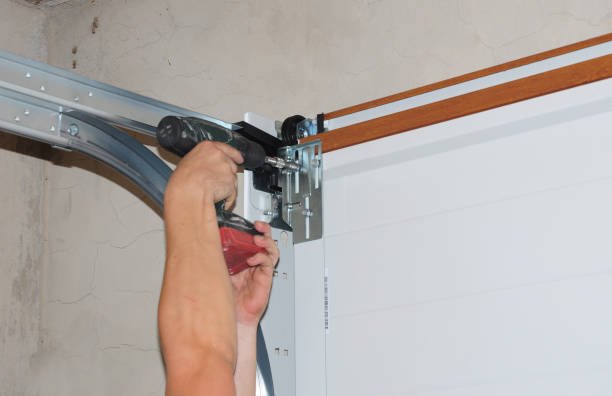Your garage door is probably the largest moving part in your home — and one of the most heavily used. While we often think about the opener or the panels, the springs do the heavy lifting every time you open or close the door. That’s why proper Garage Door Spring Replacement and routine maintenance are so crucial for your safety, convenience, and peace of mind.
In this guide, we’ll break down everything homeowners need to know about garage door springs, from how they work to when they need replacement, plus essential tips for safe upkeep.
Understanding Garage Door Springs
Garage door springs come in two main types: torsion springs and extension springs.
Torsion springs are mounted above the closed garage door. They use torque to lift and lower the door smoothly.
Extension springs are fitted on either side of the garage door tracks. They work by stretching out and pulling back to counterbalance the door’s weight.
Both types are under extreme tension, making them capable of causing serious injuries if they break or are handled incorrectly. That’s why professional Garage Door Spring Replacement is highly recommended for most homeowners.
Why Garage Door Spring Maintenance Matters
Routine garage door spring maintenance helps:
Extend lifespan — Well-maintained springs can last 7–10 years or more.
Prevent sudden breakage — A broken garage door spring can leave your door stuck, crooked, or even crash down unexpectedly.
Ensure smooth operation — Lubricated, balanced springs reduce strain on the opener and other components.
Enhance safety — Faulty springs are a major cause of garage door accidents.
Signs You Need a Garage Door Spring Replacement
How do you know it’s time to replace your springs? Look for these common red flags:
Your door won’t open or close smoothly.
A door that jerks, rattles, or halts halfway often signals that the springs are failing.
You hear loud bangs.
A sudden loud noise from the garage might be a spring snapping.
There’s a visible gap in the spring.
A broken torsion spring typically has a clear break in the middle, which creates a noticeable separation.
The door feels extra heavy.
If you need to use muscle to lift it manually, the springs aren’t doing their job.
Your opener struggles.
The motor works harder when springs are worn out, which can cause burnout.
If you spot any of these signs, stop using the door immediately and call a professional for a safe garage door spring replacement.
Safety First: Why DIY Spring Replacement is Risky
Fixing a broken garage door spring is definitely not a straightforward do-it-yourself job.
High tension: Springs store a tremendous amount of energy.
Special tools needed: Pros use winding bars and safety equipment.
Risk of injury: Improper handling can lead to cuts, falls, or worse.
Warranty concerns: DIY repairs can void warranties on parts and openers.
Always hire a licensed garage door technician for torsion spring replacement or any spring work to keep your family and property safe.
Essential Garage Door Spring Maintenance Tips
While spring replacement should be left to the pros, there’s plenty you can do to maintain your springs and extend their life:
1. Lubricate Moving Parts
Use a silicone-based garage door lubricant or white lithium grease.Apply lubricant to the springs, rollers, hinges, and tracks twice a year. Proper lubrication reduces friction and keeps the springs moving smoothly.
2. Inspect Springs Regularly
Regularly check your springs for rust, visible damage, or coils that don’t look uniform.Look for frayed cables or worn bearings, too. Early detection of wear can help prevent sudden breakage.
3. Test Balance and Alignment
Disconnect the automatic opener and lift the door manually halfway. A well-balanced door should stay in place. If it drops or shoots up, your springs may be worn or out of balance — call a pro.
4. Listen for Unusual Noises
Squeaking, popping, or grinding sounds mean your springs or other parts might need lubrication or adjustment.
5. Schedule a Professional Garage Door Tune-Up
Once a year, have a professional inspect and service your door system. This includes tightening loose hardware, testing safety features, and fine-tuning spring tension.
What to Expect During Garage Door Spring Replacement
A professional spring replacement involves:
Identifying the correct spring type and size.
Springs must match your door’s weight and dimensions.
Safe removal of the old spring.
Technicians use special winding bars to unwind torsion springs carefully.
Installing new springs and balancing the door.
Proper tension ensures smooth, safe operation.
Testing the entire system.
The technician will check the opener, tracks, cables, and safety sensors.
Extending the Life of Your New Springs
Once you’ve replaced your springs, protect your investment by:
Using the door gently: Avoid slamming it shut.
Keeping tracks clean: Wipe away debris to prevent misalignment.
Staying on top of maintenance: Regular lubrication and inspections are key.
Upgrading when needed: Consider high-cycle springs for heavy daily use.
Final Thoughts
Your garage door springs might be out of sight, but they should never be out of mind. By understanding the basics of Garage Door Spring Replacement and following a routine maintenance plan, you’ll keep your door running safely and smoothly for years to come.
If you suspect you have a broken garage door spring or need help with a torsion spring replacement, don’t take chances — call a trusted garage door repair company near you. Protect your family, your vehicle, and your home with expert help and a well-maintained door.







